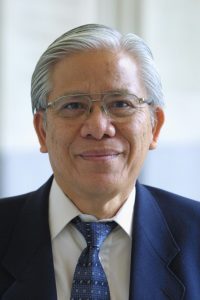Memo #122
(The third Memo from the Theme, Labour Migration from Southeast Asia)
Prod Laquian – alaquian [at] shaw.ca
 The Central Bank of the Philippines announced recently that despite the global economic crisis, remittances from Overseas Filipino Workers (OFWs) would hit $20 billion by the end of 2011. This is seven per cent higher than in 2010 and raised foreign exchange reserves to $76 billion, resulting in a $9 billion surplus in the country’s balance of payments. What lies beneath the surface of such good news?
The Central Bank of the Philippines announced recently that despite the global economic crisis, remittances from Overseas Filipino Workers (OFWs) would hit $20 billion by the end of 2011. This is seven per cent higher than in 2010 and raised foreign exchange reserves to $76 billion, resulting in a $9 billion surplus in the country’s balance of payments. What lies beneath the surface of such good news?
The government adopted the labour export program in 1974 as a stop-gap measure to ease unemployment and foreign exchange problems. But over 37 years the Philippine economy has become heavily dependent on remittances. Almost ten million Filipinos are currently working overseas, mostly in North America, the Middle East, Southeast Asia, and Europe. Public opinion polls say one-third of Filipinos would go abroad if given the chance.
The benefits of labour export policies are well known – high foreign exchange reserves, positive balance of payments, education and small scale enterprises by families receiving remittances, and improved knowledge and skills by OFWs returning home. Earnings from overseas employment have also encouraged investments in the housing industry and enlivened domestic tourism.
The downside costs receive less attention. They include abuse of OFWs, family breakdowns from long separations, and critical labour shortages in key industries and services. The desire to work abroad has negatively influenced educational aspirations – some Filipino doctors have taken up nursing to get overseas jobs. In 2010, more than 2,000 registered nurses from the Philippines took the National Council Licensure Examination for Registered Nurses (NCLEX) in hopes of finding work in the US even as local hospitals suffered severe shortages. Teachers are migrating as domestic workers or moving to call centre jobs. Outsourcing is an $11 billion a year industry and the Technical Education and Skills Development Authority (TESDA), a government agency, estimates that the local outsourcing industry needs about 100,000 workers. But trained workers prefer to work abroad.
The most serious negative effect of labour export policies has been the neglect of domestic production and poor investments in infrastructure, agriculture, mining, export promotion, and social development because of the easy availability of funds from remittances.
The country may be likened to a man who has become lazy because he receives remittances from a wife working as a domestic worker abroad. For the government, the easy money from foreign remittances is a major cause of its inability to pursue sound economic development programs.
About the Author:
Prod Laquian – Professor Emeritus of human settlements planning at The University of British Columbia.
Links:
- Seeking a Better Life Abroad: A Study of Filipinos in Canada, 1957-2007, 2008. (Book co-authored by Prod Laquian).
- The Silent Debate: Asian Immigration and Racism in Canada, Institute of Asian Research, 1998. (Co-edited by Prod Laquian).
Related Memos:
- Other Memos on migrants, migration, immigration, labour.